Care
How can I go on holiday with my cat? Travelling by car and plane
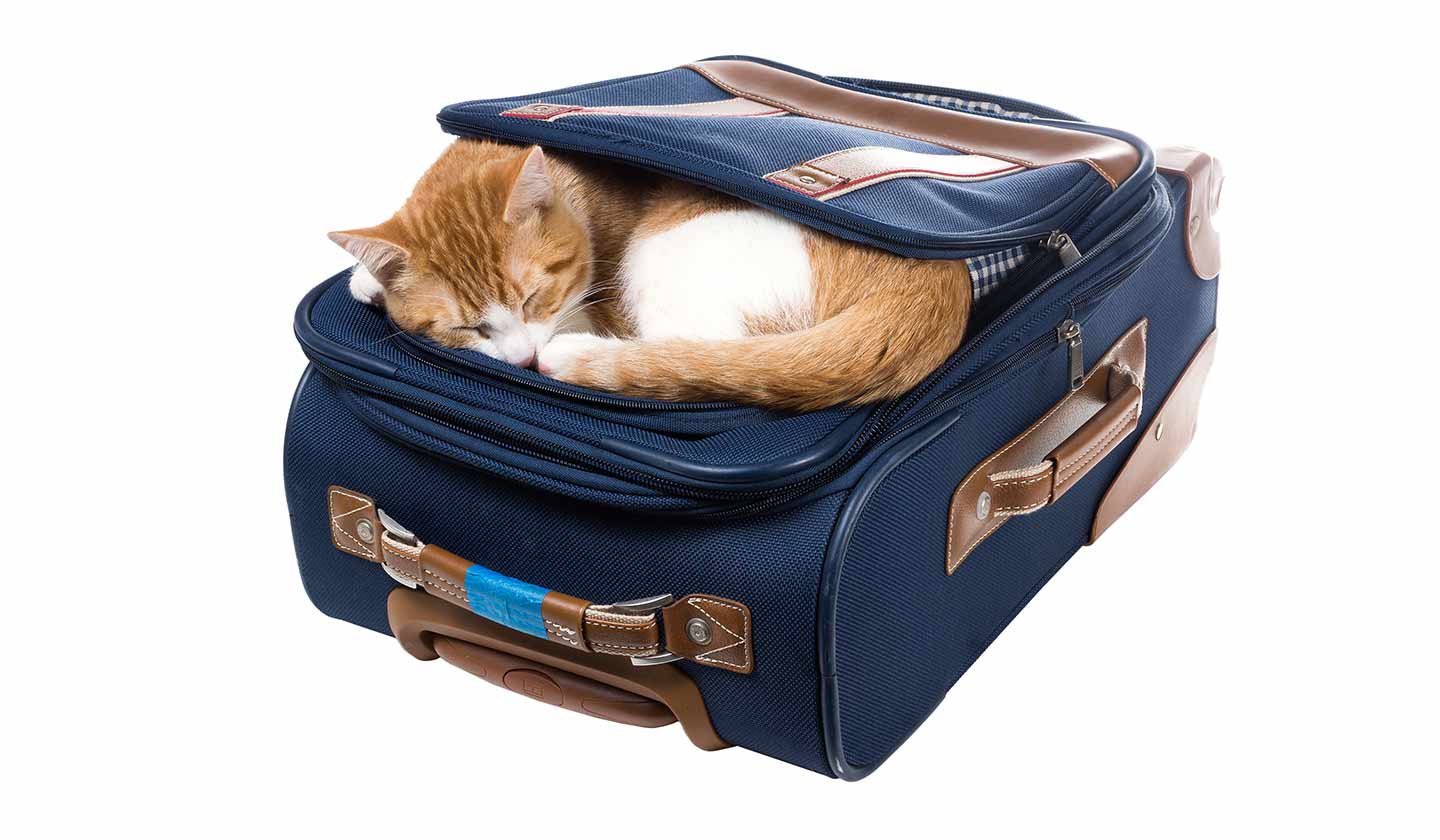
Cats don't particularly like to travel. Moving from one place to another is stressful for these sensitive animals - the sounds and smells can disturb them and make them anxious. However, there are many situations where owners have no choice but to move their pets from place to place, whether it's for their annual visit to the vet, a house move or a holiday. Riding in a car or plane may not be the most desirable way to travel - but with some preparation you can free your kitty from this fear.
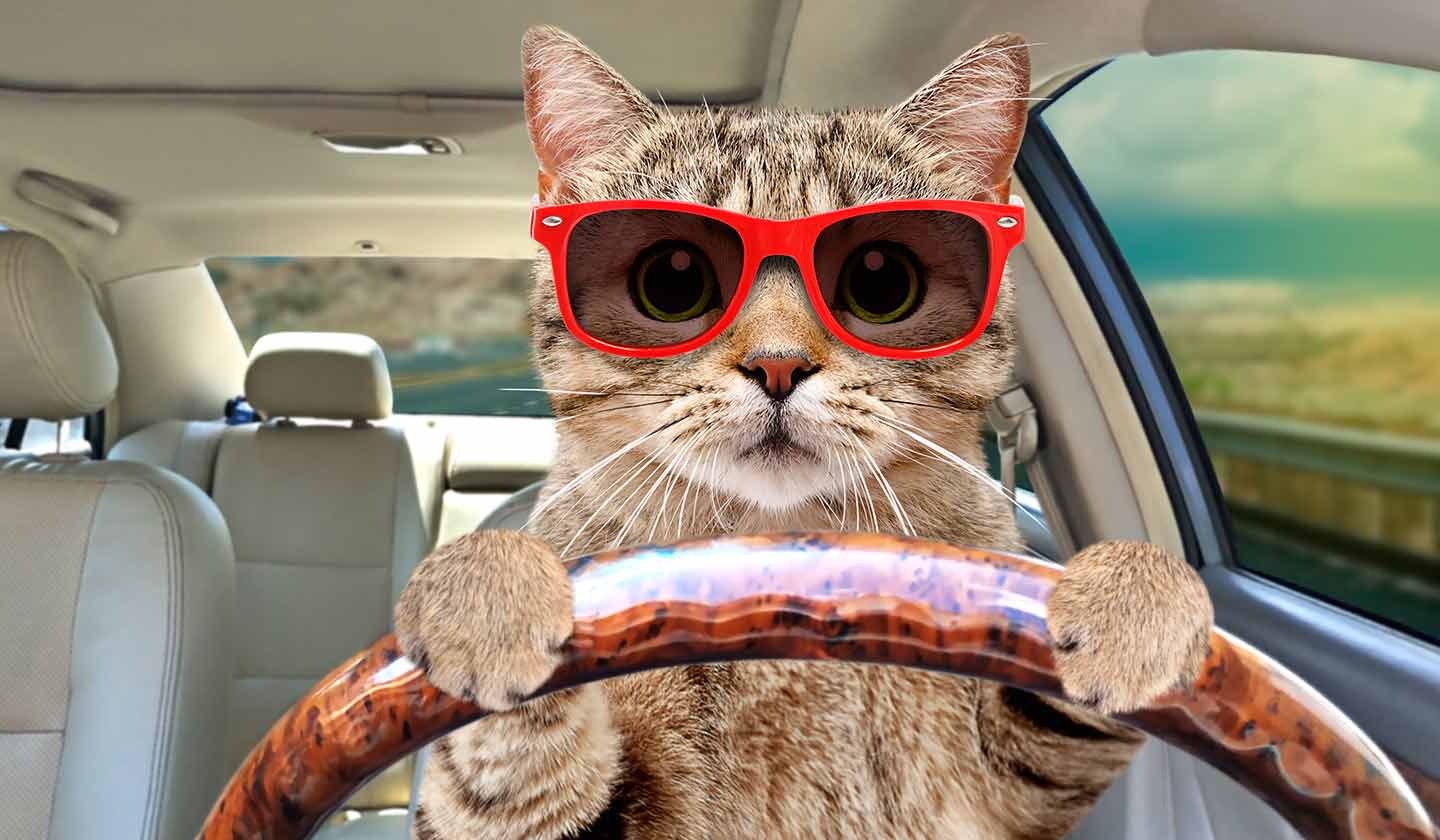
Travelling with your cat by car
Knowing how to travel with cats by car is the most useful topic to start with. If you feel confident, in control of the situation and know how to keep your cat calm, the journey can go smoothly for both of you.
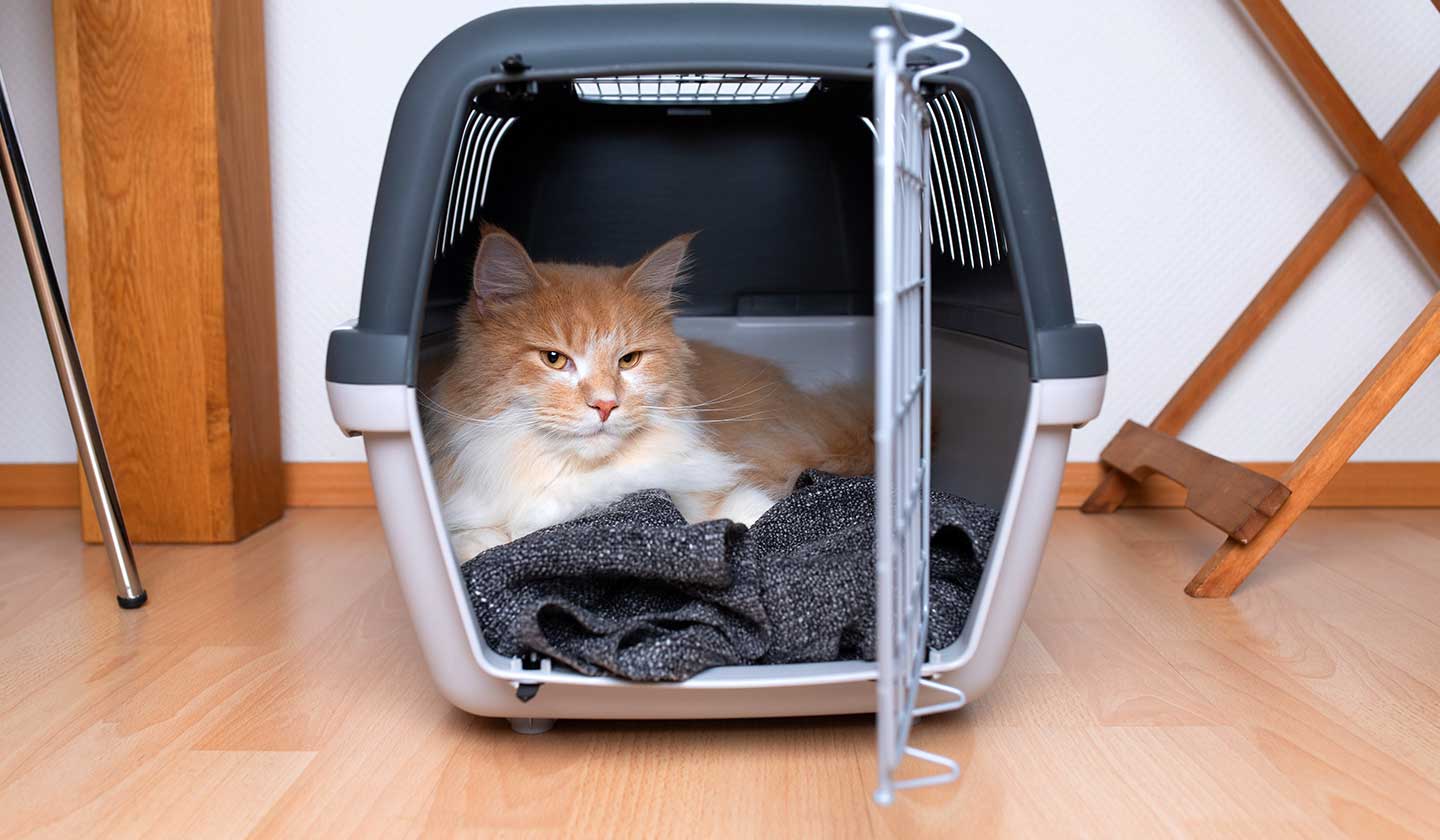
Before the trip:
- Your most important piece of luggage (with the exception of your cat, of course) is the carrier. Never let your cat travel loose inside the car. Besides being illegal, it is dangerous because it can distract the driver and because it is very easy for him to escape when any window or car door is opened. It is safer to keep it closed.
- As he will have to stay in the carrier for the whole trip, choose a box that is strong, safe, easy to clean (in case of any carelessness and big enough for your cat. You can choose a plastic or metal one, but never use a cardboard box because it's not very solid and it may fall apart if your cat pees inside. While it may seem good to choose the largest carrier box available, some cats like to feel cosy and too large a space may make them feel unsafe. Of course, you don't want a box that's too small either, so choose carefully.
- Buy some feline pheromone spray from your vet or pet shop and spray it inside the carrier before you put your cat inside, as it will help him feel calmer. Make your cat's carrier as cosy as possible by placing a familiar blanket or their favourite toy.
- Get your cat used to travelling by car gradually, starting with short routes. Then, slowly increase the distance, always rewarding your cat with treats and cuddles. Ideally, you should start training your cat, since kitten, so that he gets used to travelling from an early age. Your cat may be a little vocal on the first trip, but usually calms down afterwards.
- If you know your pet is a particularly nervous traveller, but you need to take them somewhere by car, talk to your vet before the journey.
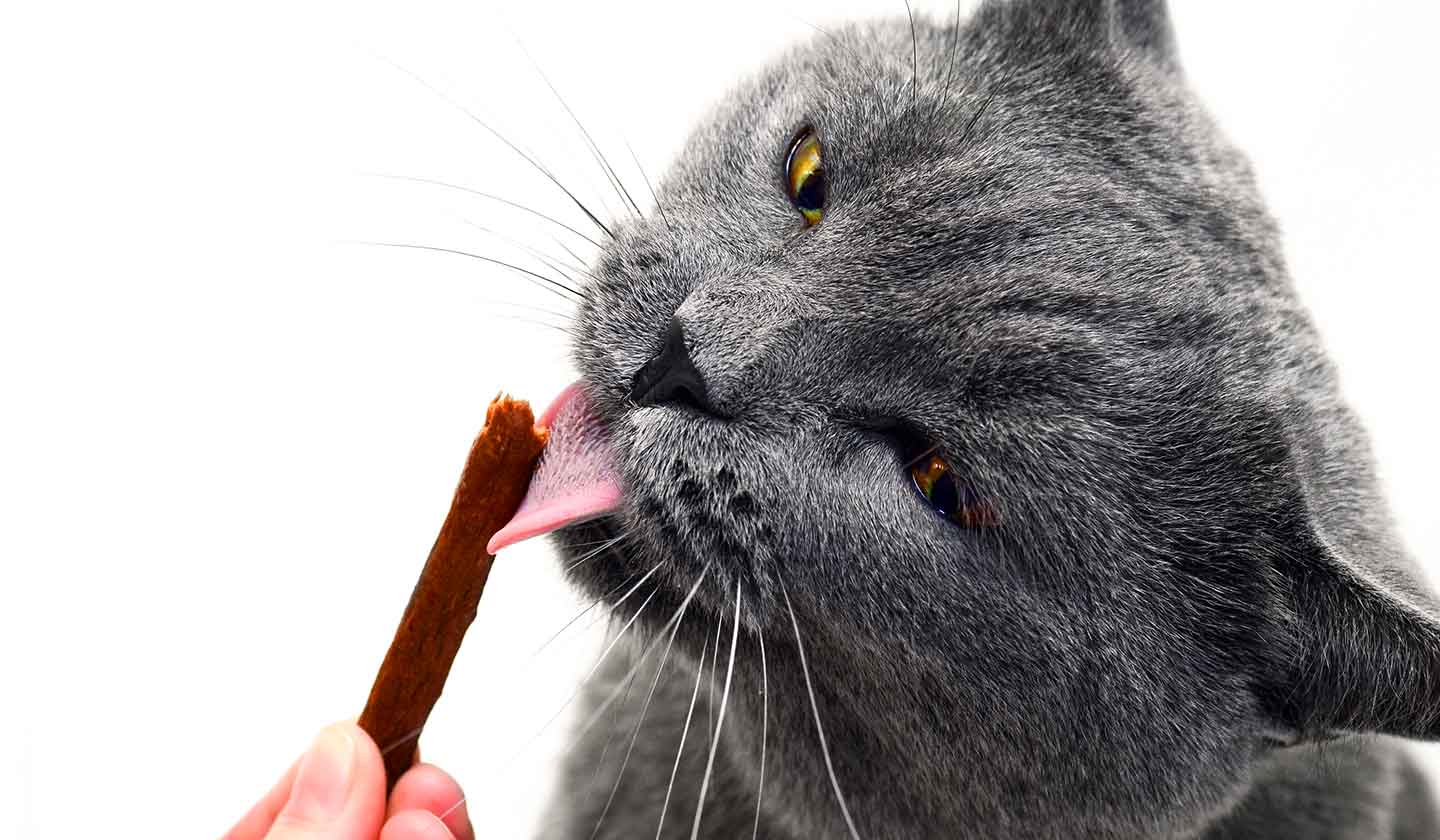
During the trip:
- Do not give your cat any food one to two hours before the trip. A full stomach can make him nauseous, which may make him reject future trips even more.
- When travelling with cats in the car, place the carrier in a place where it cannot distract the driver and where it will be properly secured in case of any sudden braking.
- It's a good idea to put a waterproof cover under the box in case your cat has a slight slip-up.
- Speaking of carelessness, bring paper towels, rubbish bags and a pet-friendly disinfectant. Prevention is better than cure!
- If you use a metal carrier, which allows your cat to see from all sides, it may be more comfortable for him to cover it with a blanket or piece of clothing, which will give the box a sheltered feel.
- Make sure your cat feels neither hot nor cold. When you are sure he is safe in the carrier, you can open the car window a little to give him some fresh air.
- Never leave him inside the car, especially on hot days when it is not safe to stay even for a few minutes. Cars heat up much faster than you think, even on the mildest days, and you can't put your cat at risk.
- If you plan a long car journey (of two hours or more), then you should think about a 2 in 1 carrier, which is both carrier and litter, as well as carrying a bowl and a bottle of fresh water. If, for any reason, you need to open your cat's carrier during the trip, make sure all the car doors and windows are closed so your cat can't escape, which is especially dangerous in an unknown place.
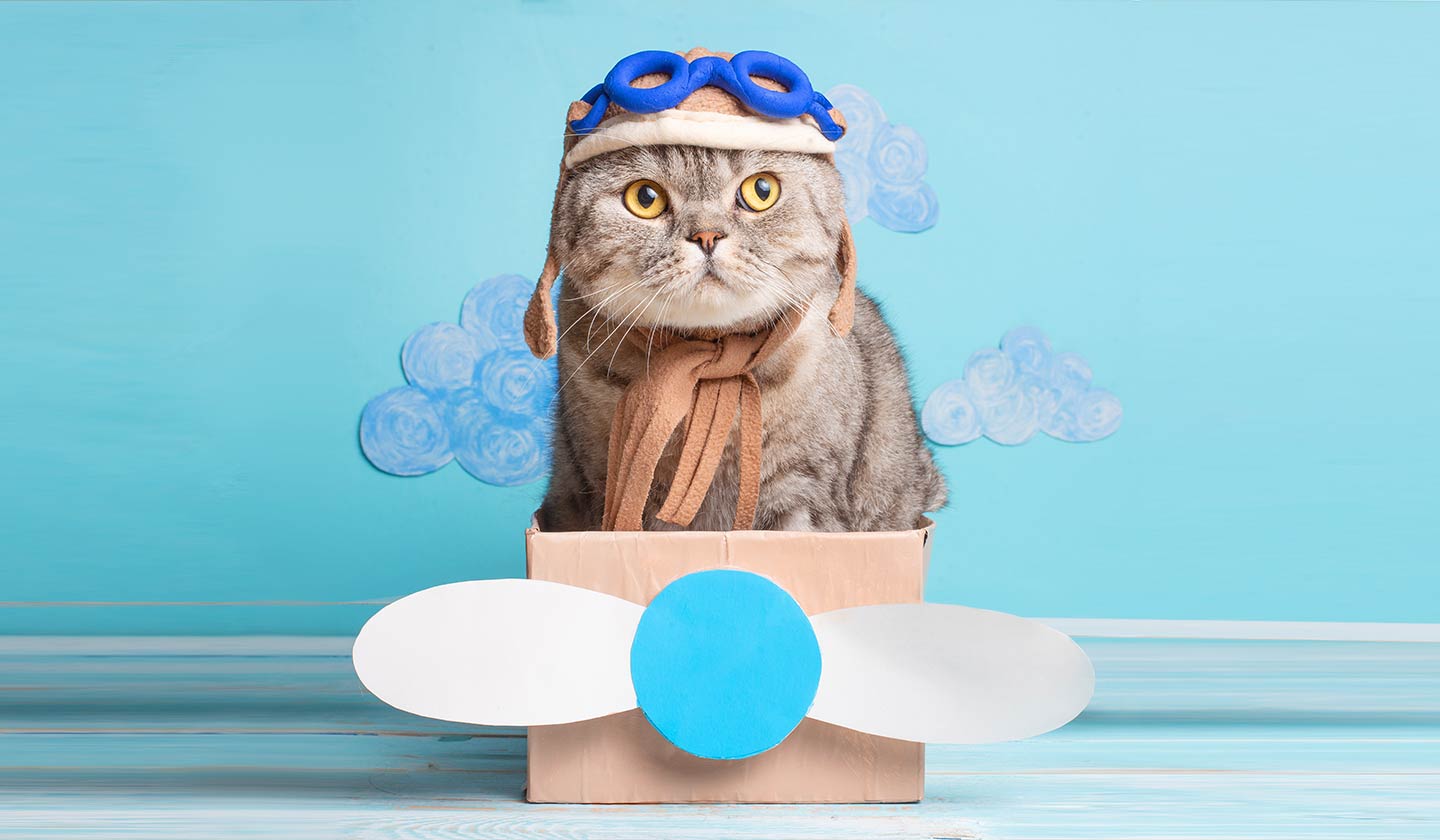
Travelling by Plane
You're unlikely to have to do much flying with your cat, but whether you're taking your cat on holiday or relocating, transporting a cat on a plane requires a lot of planning.
Before booking your flight, there is some research to do and actions to take:
- The first thing to do is to consult the website of the Direção Geral de Veterinária to obtain information on all the legal requirements that apply to the transport of pets to and from EU and non-EU countries.
- Consult your vet in good time (at least 7-8 months before you travel) because your cat will need some vaccines and certificates specific to the country you are visiting. Some countries also require a health certificate from your vet 24-48 hours before the trip.
- Contact the airline about transporting cats to inquire about specific rules about transporting a cat on the plane- Ask specifically about where your cat will be housed during the trip (most likely to go in the cargo area), what kind of rules your carrier has to respect, how often food will be made available and if they have any kind of rules about the age or medical condition of your cat. We do not advise (and may not even be allowed) to travel with kittens under 3 months old, an elderly cat, a pregnant cat or an unhealthy cat.
- If you plan to travel with more than one cat, it's a good idea to provide separate carriers for them. Even best friends can get on each other's nerves during a long flight!
Booking your flight:
- Make sure the airline knows you will be travelling with a cat and ask for advice. The International Air Transport Association website also provides useful information for pet owners.
- Try to choose the most direct flight possible to avoid your cat having to be shuttled between planes and choose your flight times carefully to avoid arriving at a time of day when it is too hot or too cold.
- Some flights are not licensed to carry animals, so you should check if you are flying on the same plane as your cat.
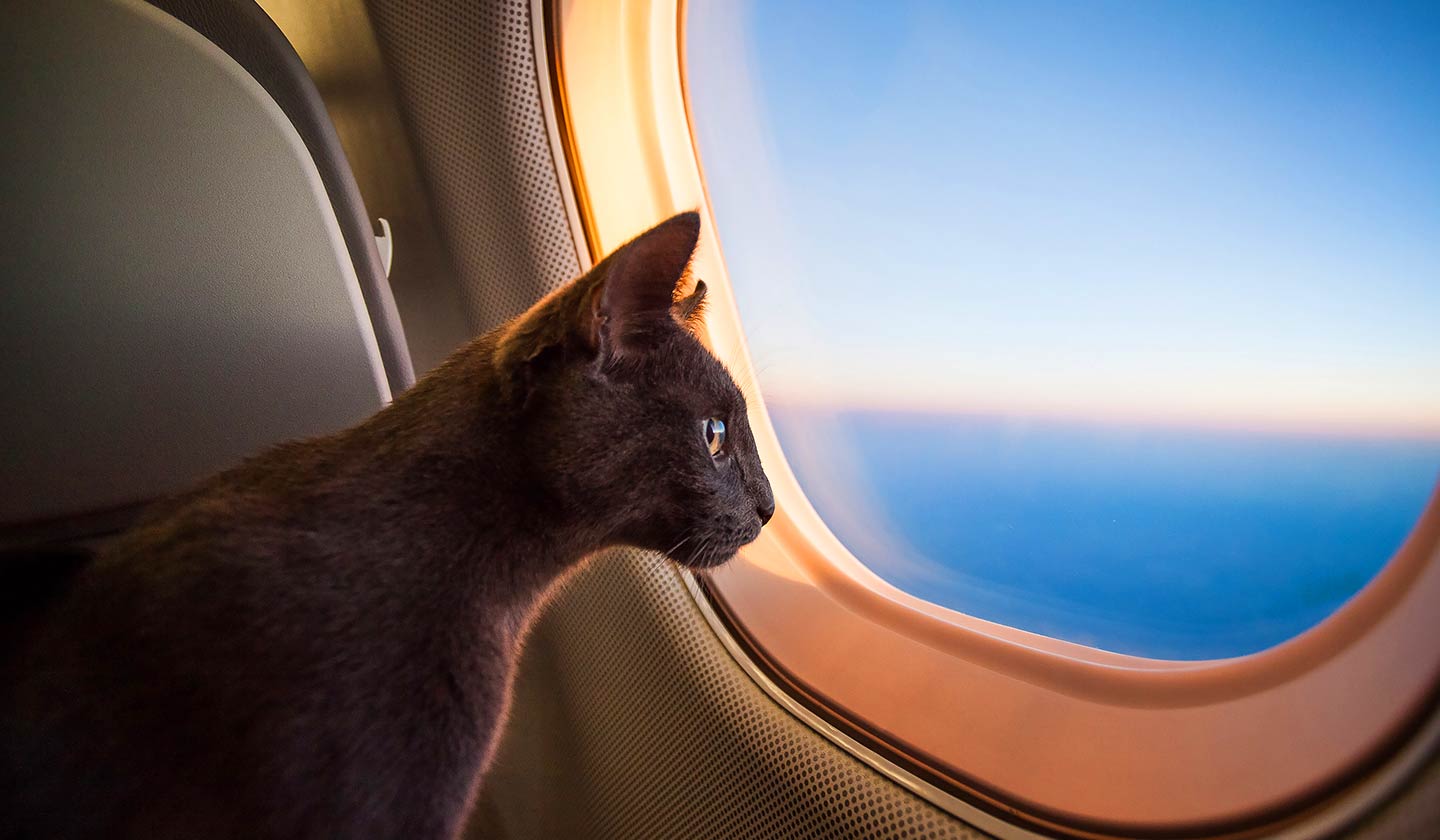
Preparing the flight:
When you're busy packing, don't forget there are practical things you need to prepare for your cat's journey:
- If you need a medical statement or are worried about how your cat will cope with the trip, consult your veterinarian a few days before the trip. If sedation has been prescribed, you should find out about side effects before the trip (sedation can affect the way your cat copes with temperature changes, so sedation can even make him more agitated, doing more harm than good).
- Confirm that the information on your cat's ticket exactly matches the information on your ticket. If it doesn't, contact the airline immediately.
- Prepare your cat's carrier and label it clearly with your cat's and flight information. Add a 24-hour feeding guide in case, for whatever reason, you don't land in the same place at the same time. Buy your cat a hat and put a collar on him with the address of his destination and emergency numbers. Your cat must wear this collar, identified, for the entire duration of the trip.
- Finally, there are also precautions you can take to make your cat's trip more comfortable: 1) Get him used to using the carrier by placing it in his favourite places in the house with a comfortable blanket and some tasty treats. 2) Arrive at the airport early so that he is relaxed. Ideally, your cat should eat early (it is recommended that you remove access to food between 2-4 hours before departure to prevent him from getting motion sickness), have used the litter box and be comfortably settled for the journey. 3) Taking your cat on the plane or travelling with cats by car can be stressful, but the better you prepare and the more relaxed you are, the more comfortable your cat will feel.
Sources
Purina
Também lhe poderá interessar
Prevention
International destinations - Go, but go without worrying!
Prevention and treatment






